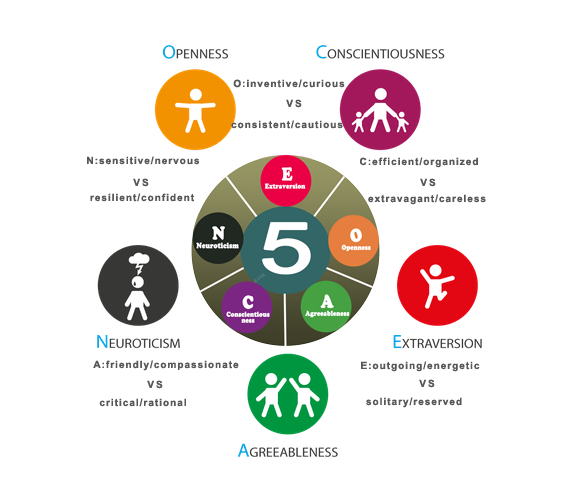Big Five personality traits
The Big Five personality traits is a suggested taxonomy, or grouping, for personality traits,developed from the 1980s onwards in psychological trait theory. When factor analysis (a statistical technique) is applied to personality survey data, it reveals semantic associations: some words used to describe aspects of personality are often applied to the same person. For example, someone described as conscientious is more likely to be described as “always prepared” rather than “messy”. These associations suggest five broad dimensions used in common language to describe the human personality, temperament and psyche.The theory identifies five factors:

extraversion (outgoing/energetic vs. solitary/reserved)
agreeableness (friendly/compassionate vs. critical/rational)
openness to experience (inventive/curious vs. consistent/cautious)
conscientiousness (efficient/organized vs. extravagant/careless)
neuroticism (sensitive/nervous vs. resilient/confident)
The five factors may be remembered using the acronyms “OCEAN” or “CANOE”. Beneath each proposed global factor, there are a number of correlated and more specific primary factors. For example, extraversion is typically associated with qualities such as gregariousness, assertiveness, excitement-seeking, warmth, activity, and positive emotions.These traits are not black and white, but rather placed on continua.
Family life and upbringing affects these traits[citation needed]. Twin studies and other research have shown that about half of the variation between individuals results from their genetic inheritance and half from their environment. Researchers have found conscientiousness, extraversion, openness to experience, and neuroticism to be relatively stable from middle age through old age.
The above is From Wikipedia.
Scan the QR code below to download a professional evaluation APP, which supports Android and IOS systems.

